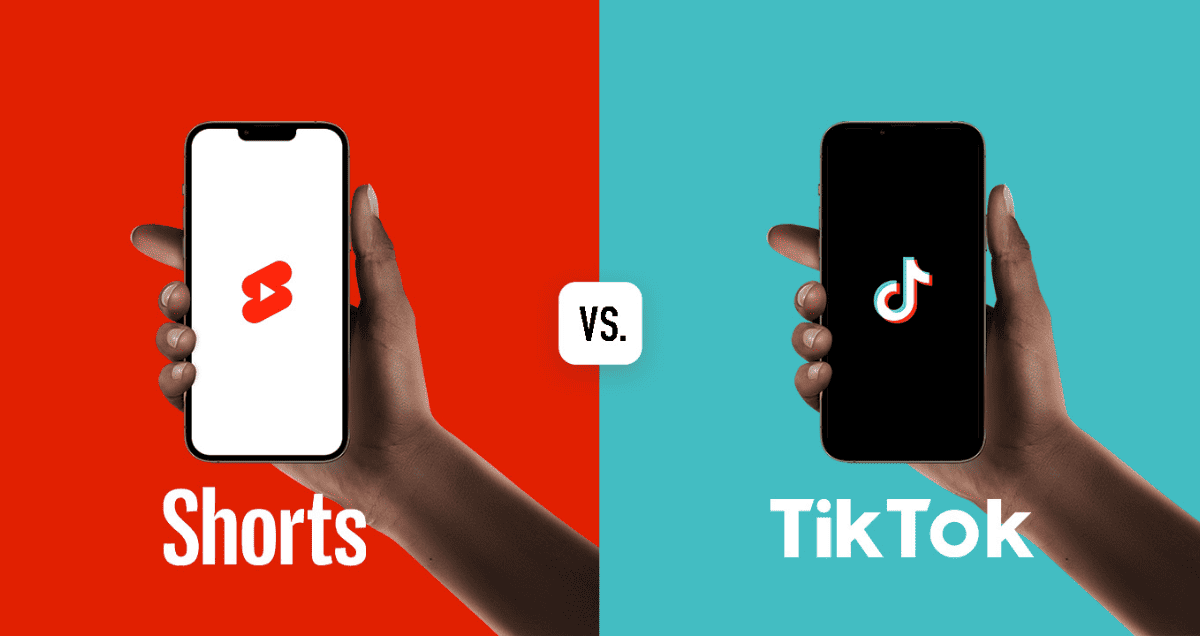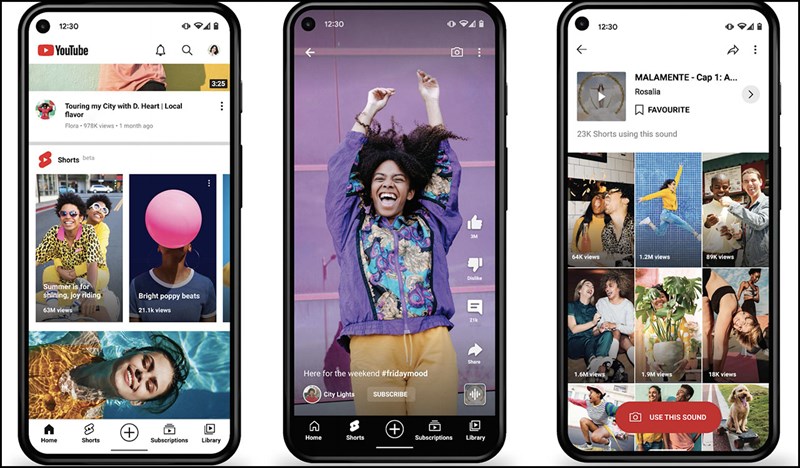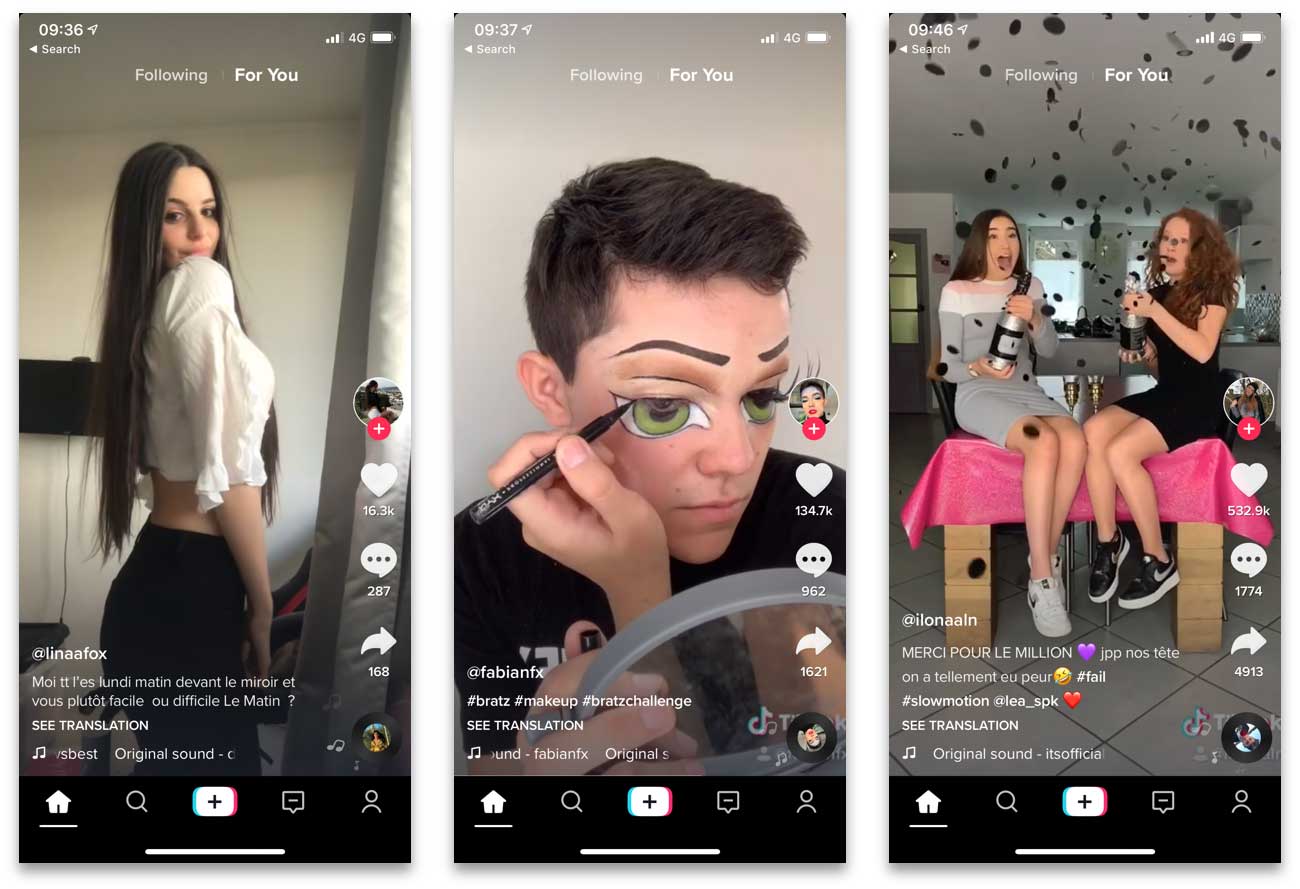In this comprehensive comparison, we will delve into the key aspects of YouTube Shorts and TikTok, highlighting their pros and cons, algorithmic intricacies, and potential for content creators. Whether you’re an aspiring influencer or a seasoned content producer, understanding the nuances of these platforms is essential to make informed decisions about where to invest your creative energy.
Let’s embark on a journey to explore the remarkable world of YouTube Shorts and TikTok, and discover which one aligns best with your content creation goals.
YouTube Shorts vs TikTok: The Essence of Short-Form Videos
Let’s kick things off by delving into the essence of these short-form videos and understanding how they operate:
What are YouTube Shorts?
YouTube Shorts can be thought of as YouTube’s equivalent to TikTok or Instagram Reels, consisting of short-form vertical videos lasting anywhere from 15 to 60 seconds. YouTube classifies them as “easy to create” short-form videos, as all you really need is a smartphone with a camera and an active YouTube account. Within the platform, you can explore the use of music snippets from other (eligible) YouTube videos, carry out edits, and seamlessly incorporate text into your Shorts.
Pros of YouTube Shorts
Broaden Your Audience Reach
YouTube Shorts offer a fantastic opportunity to expand your viewership. While it’s not a guaranteed method, there’s a belief in the creator community that Shorts can expose you to a wider audience. In 2020 alone, YouTube Shorts amassed a whopping 3.5 billion daily views, showcasing its tremendous potential for audience growth.
Embrace the Short-Form Craze
Short-form content has surged in popularity due to its easy-to-digest nature, surpassing longer videos in terms of “consumability.”
Effortless Creation and Sharing
YouTube Shorts are designed to be user-friendly and quick to create, share, and consume. This makes them suitable for creators at all levels, from novices to established YouTubers. You can easily record, edit, and upload Shorts directly from your mobile device. Alternatively, Riverside’s Magic Clips feature provides a rapid way to craft YouTube Shorts.
Unlock Monetization Opportunities
Monetizing your Shorts is straightforward and offers an additional income stream. To qualify for the YouTube Partner programme, you’ll need to meet certain criteria, including having 1000 subscribers and 10 million valid public Short views in the past 90 days.
Enhance Your Long-Form Content
YouTube Shorts serve as a valuable tool for promoting and repurposing your longer YouTube videos. By using Riverside Magic Clips, you can swiftly create short-form promotional clips that guide viewers to your full-length videos. Moreover, Shorts effectively drive viewers from short-form to long-form content, creating a seamless transition for your audience.
Cons of YouTube Shorts
Time-Consuming Endeavor
YouTube Shorts can be more time-consuming than initially anticipated. They require an additional layer in your video production process, involving the identification of pivotal moments, keeping pace with trends, and the continuous generation of fresh ideas. If your Shorts aren’t racking up substantial views, you might feel like they’re not delivering the desired value for the time invested.
Imperative Consistency
The inherently transient nature of short-form content demands consistent and regular posting to maintain your content’s visibility within the algorithm.
Constrained Duration
While the 60-second maximum length is advantageous in some ways, it can also pose challenges. For certain creators, this limit can be constraining and more challenging to work with compared to the extended durations allowed by platforms like Instagram Reels and TikTok.
What is TikTok?
TikTok proudly brands itself as the “premier hub for short-form mobile videos,” a statement that rings true as it surged to global prominence since 2019. Setting it apart from YouTube, TikTok exclusively focuses on short-form content, with video durations ranging from under 60 seconds to a maximum of 10 minutes.
Similar to YouTube Shorts, TikTok offers the convenience of shooting, editing, and publishing videos directly within the app.
Pros of TikTok
Extensive Audience Potential
TikTok recorded a staggering 672 million worldwide downloads in 2022 and boasts 1 billion active monthly users. This vast user base provides ample potential for reaching diverse audiences. Keep in mind that TikTok primarily attracts younger users, with nearly 50% of its audience below the age of 30. Depending on your target demographic, this factor may impact your outreach.
Simplified Content Creation and Sharing
TikTok offers a user-friendly platform for content creation and sharing, regardless of your level of experience. TikTok don’t necessarily require a polished or professional appearance, reducing the effort needed for content development.
Cons of TikTok
Political Controversies
TikTok has been embroiled in political controversies, leading to concerns regarding its usage and regulatory issues. Policymakers worldwide have considered restrictions due to security and user data privacy concerns.
Monetization Challenges
Although TikTok provides monetization opportunities through the TikTok Creator Next program, it comes with stringent requirements, including minimum follower counts and specific geographic restrictions (US, UK, Germany, France, Italy, or Spain). Creators in other regions may not have access to native monetization options.
Trend Dependency
TikTok content heavily relies on trends and has a short lifespan. To perform well within the algorithm, creators must stay vigilant about the latest trends, formats, and video styles.
Differences and Similarities between YouTube Shorts and TikTok
Finding success on both TikTok and YouTube relies on your capacity to grasp and utilize their algorithms, though understanding these algorithms isn’t an exact science. In essence, it seems that both platforms’ algorithms operate on a similar basis. Now, let’s explore what we’ve uncovered about the algorithms behind TikTok and YouTube.
Algorithm
Success on platforms like TikTok and YouTube often boils down to your ability to navigate and leverage their algorithms, though understanding these algorithms isn’t a precise science. Nonetheless, there is a common thread in how both TikTok and YouTube algorithms function. In the following sections, we’ll explore what we’ve gleaned about the algorithms employed by these two platforms.
YouTube Shorts Algorithm
YouTube Shorts are guided by a distinct algorithm separate from that of regular long-form content. This distinction was affirmed during an interview with Creator Support. Although the precise workings remain undisclosed, it’s evident that the YouTube Shorts algorithm leverages video-related data to surface and promote content to potentially interested viewers. Essential factors encompass video length, content themes, and engagement metrics, including views and viewer retention rates.
TikTok’s Algorithm
TikTok’s algorithm appears to operate based on a blend of various elements. These encompass:
- User interactions,
- The subject matter of your video,
- Alignment with trending themes,
- Utilization of effects, and
- Viewer engagement.
YouTube vs TikTok: Which should you choose?
The straightforward answer is that you might want to consider posting on both platforms. By doing this, you can maximize your reach and the impact of your content. It also allows you to diversify your online presence and connect with various audiences and user demographics.
However, if you’re contemplating using only one platform, you should evaluate your goals for your short-form videos. For example, if you regularly create content on YouTube, it’s a wise choice to consistently share related shorts. On the other hand, if you’re not actively involved on YouTube, it may not be worth dedicating too much time and effort to the platform.
In conclusion, both YouTube Shorts and TikTok offer distinct advantages and challenges for content creators. Your choice between the two should align with your specific goals, audience demographics, and creative preferences. Whichever platform you choose, remember that success ultimately hinges on your ability to harness the unique features and algorithms of each platform to engage and captivate your audience.




